What makes an electric bicycle different from a traditional bike? It's all about the motor. An e-bike's electric motor powers it forward, even when the rider isn't pedaling hard. Because of this, e-bikes have unique benefits. Bikers can ride further or journey over rougher terrain.
When shopping for an e-bike, you'll encounter all kinds of motors and acronyms for technical specifications. RPM, W, Nm, PAS — How do you find out what exactly it all means?
We're here to help it all make sense. It's important to understand the nitty gritty details of e-bikes, because motors can impact your ride in many ways — from how fast the bike can go to how smooth it drives or how easy it is to handle.
Here we’ll give you a comprehensive guide to e-bike motors. With this information, you should be able to competently (and confidently) choose an e-bike motor that fits your unique needs as a cyclist. Let's get to it!
How do electric bike motors work?
Let's start with the basics — how does an e-bike motor work? First off, the motor is powered by the bike's battery. Different bikes have different battery capacities. For example, every Velotric bike has a 48V 14.4Ah lithium ion battery. We’ll go over what this means below.
First, let’s talk about volts. Volts (V) are comparable to horsepower in car terms. Horsepower tells you how much power the car's engine produces. Volts, in the same way, tell you how much power the e-bike's motor produces. The higher the voltage, the more power.
Now we’ll cover Ah — or amp hours. If we're sticking with the car comparison, Ah basically translates to how big your bike’s "gas tank" is. The more amp hours the battery has, the more range the e-bike will have.
That said, range is also impacted by other factors, like how much weight the bike carries. For example, the Velotric Discover 1 e-bike has a 48V 14.4Ah battery and a maximum range of 60 miles. In contrast, the Velotric Nomad 1, which also has a 48V 14.4Ah battery, only has a range of only 55 miles.
Why the difference?
The difference is due to the fact that the Nomad 1 has a heavier frame and fatter tires for rougher terrain. This adds weight and depletes the battery more quickly, reducing the range. It's as simple as that.
Again, the battery powers the motor, and these battery-related terms (V = Volts, Ah = Amp Hours) might come in handy when you’re picking out your electric bike. When comparing e-bike motors, you'll also see other terms like Nm, RPM, and W, and we’ll go into what these mean below.
Torque (Nm)
Torque is a concept that's relevant for mid-drive and gear hub motors (more on what that means in the next section). Basically, when this type of e-bike motor is running, it generates torque which is the force that moves the engine's shaft.
On a gear hub motor, the moving shaft drives the wheel axle; in a mid-drive motor, the moving shaft drives the crank arms or “cranks” (those levers the pedals are attached to). In either case, this movement is what propels the bike forward.
Torque, which is the rotational force that starts all this action by twisting the motor shaft around and around, is measured in Newton meters (Nm).
Speed (rpm)
RPM stands for revolutions per minute. It refers to the motor's speed. The more revolutions per minute, the faster the motor is working. RPM and torque combined indicate the motor's power — more on that next.
Power (W)
Finally, there's power, which is determined by a motor's torque and speed. There's even a formula for it: W = Nm x RPM. Power basically refers to how fast torque and rotations per minute are happening.
So, if the torque (Nm) is higher and the rotations per minute (RPM) are greater, the motor will be more powerful. Again, we can think of horsepower in car terms.
Throttle vs. Pedal Assist (PAS)
When you're browsing e-bikes, you'll likely also see the terms "throttle assist" and "pedal assist" or pedal assist system (PAS). What do these mean?
The throttle is one way to engage the motor. If the rider engages the throttle, the bike is propelled forward. The throttle is controlled by a grip-shift or trigger-style control on the bike's handlebars, and when throttle assist is engaged, you can pedal — or just sit back and enjoy the ride.
In contrast, pedal assist is activated by physically pedaling the bike which triggers the motor. A pedal assist system (PAS) usually has various levels. How much "help" the system gives you depends on how much leg power you provide through pedaling.
For example, Velotric's Nomad and Discover e-bike models come with both five-level pedal assist and throttle assist. This means you can engage their motors with pedal assist or without pedaling using throttle assist.
Types of electric bike motors
Now that you've got some of the basic e-bike motor lingo down, it's time to get into the details. E-bike motors can have varied RPM, W, and Nm. However, motors can also differ in terms of their basic mechanics. Here are the main types of e-bike motors.
Mid-drive motors
Mid-drive motors are located in the center of the bike's frame, between the crank arms or "cranks" (those levers that the pedals are attached to). This motor gets its name from its position in the bike's middle, between the rear wheel and the front wheel.
This kind of motor generates torque through a spinning shaft which is connected to a chainring. The chainring connects the cranks and the pedals and moves them along. Basically, the spinning shaft creates torque, which activates the PAS.
Mid-drive motors are efficient and create a smooth ride thanks to their positioning, which creates a direct link between the driving force and the motor. They also offer less jerky acceleration, a smoother power output, and easier handling since the bulkiest component of the bike, the motor, is centrally located.
The downside of mid-sized motors is that they’re more expensive and harder to maintain. Additionally, if the chain breaks, the bike won't work.
Direct-drive hub motors
Direct-drive hub motors are located at the back of the bike, with the motor's shaft serving as the e-bike's rear axle. Here, the shaft is fixed in place, unlike the model described above.
Instead of the shaft moving and creating torque, the motor (the "hub") moves by spinning around the shaft. This action creates the torque, the moving force that propels the bike forward.
Direct-drive motors are simple, durable, and quiet. They also offer a high level of maximum, sustained power.
This motor’s downside is that they’re large, heavy, and inefficient. Riders may have trouble accelerating quickly and notice a drag when pedaling. The uneven distribution of weight that results from having the motor at the back of the bike can also complicate handling.
Geared hub motors
Geared hub motors are similar to direct-drive motors in that they also have a moving shaft. However, in a mid-drive motor, the moving shaft is connected to a chainring, which connects to the cranks and pedals. In contrast, in a gear hub motor, the moving shaft drives the wheel axle.
The electric motor inside the gear hub spins at a super-fast speed, and that motor's shaft connects to various gears that then spin the hub itself at a slower speed. The gear hub system is concealed within the hub.
The result is greater torque (Nm) but less speed (RPM). Geared motors are smaller than direct-drive motors and relatively affordable. They're also small and light and don't create a lot of drag when pedaling.
What do power ratings mean when choosing an electric bike motor?
You might also see e-bikes advertised in terms of "rated power." This term basically defines the maximum amount of power that the e-bike motor can steadily provide without causing damage to the motor.
Technically, the e-bike motor may be able to provide more power than its rated power or "maximum power," but that speed wouldn't be sustainable. Maximum power may also be referred to as “peak power.”
Some e-bike manufacturers will provide you with the motor's rated power and "peak power" metrics. The higher an e-bike motor's wattage, the more power it has. For example, the Velotric Discover 1 has a rated/peak motor of 500/900W, while the Velotric Nomad 1 has a rated motor of 750W.
In general, the greater a bike's wattage, the more power it has, and that makes it better — right? Well, not always. It depends on what you’d like to get out of your bike. A more powerful motor might be good for carrying heavy cargo, climbing hills, or off-roading, for example.
But there could be reasons a more powerful motor might not be your best bet. If you're looking to maximize range, you wouldn’t want a more powerful motor. You might want the Discover 1 e-bike which has 500/900W rated/peak motor, for example, and not the Nomad 1 which has a 750W rated motor.
The Discover 1 has a range of 65 miles, while the Nomad 1 has a range of 55 miles. In this case, the Nomad's motor is more powerful — but the motor and bike itself are bulkier and heavier. The Discover has greater range.
Electric bike classes
E-bike motors also play a role in determining the "class" an e-bike falls under. E-bikes classes are important to understand, because there are laws governing what kind of classes of e-bikes are allowed in certain states. For example, knowing these classes could help you determine whether you need to wear a helmet when riding an e-bike.
Here's a quick roundup of the four main classes of electric bicycles:
- Class 1: Class 1 e-bikes don't exceed top speeds of 20 mph. They do not have throttle assist, meaning they work only if the rider is pedaling. This kind of bike is also called a pedelec. Class 1 e-bikes are usually allowed on traditional bike paths and bike lanes (although laws vary according to municipality).
- Class 2: Class 2 e-bikes can't exceed top speeds of 20 mph. However, they do have throttle assist, which means they can propel the rider forward even when they aren’t pedaling. Most laws also allow class 2 bikes in traditional bike lanes and paths.
- Class 3: Class 3 e-bikes can go up to 28 mph. They may or may not have throttle assist (some states, like California, don’t allow throttle assist on class 3 bikes). This type of e-bike should additionally be equipped with a speedometer (for example, as a small LCD screen). Class 3 e-bikes generally aren't allowed on standard bike paths or lanes. You’ll have to ride them in road lanes or bike-only shoulder lanes.
- Class 4: Class 4 e-bikes are characterized by the extra wattage of their motors, which can range from 1,000–3,000W. They can use PAS or throttle assist, and they don't have limited maximum speeds. They're considered equivalent to scooters or mopeds in most jurisdictions and subject to the same regulations. For example, you can't ride a Class 4 e-bike in a bike lane; you'd have to ride on the road. You'll also need a license and registration to ride a class 4 e-bike in most places.
Best e-bike motor manufacturers
Understanding e-bike vocabulary can help you make an educated decision when considering e-bike motors. However, there are also different motor system manufacturers to choose from, and it’s a good idea to know what these offer too. Here, we’ll go over some of the biggest names in the business.
Shimano
Shimano is the most prominent bicycle parts producer worldwide, and it is used in each model offered by Velotric. In fact, they create 70% of global market bicycle brakes and gears. They generate 50% of bicycle components in general. Shimano is also prominent in professional cyclist settings. In the 2015 Tour de France, 17 of 22 teams used Shimano components on their bikes.
Shimano's dominance in the industry has translated to the e-bike market, with the Shimano STEPS system being a popular favorite among manufacturers. Shimano has six different motors in the STEPS range. E500, E600, and E6100 are used for city bikes and trekking while E700, E800, and EP8 are used for electric mountain bike (eMTB) models.
Bosch
Bosch electric bike systems are another top choice. They focus on mid-drive motors, and their main motor lines include Active Line, Active Line Plus, Cargo Line, Performance Line, and Performance Line CX.
Each line has its own purpose. For example, the Active Line motor is ideal for commuter bikes while the Performance Line is best for a sporty trek, and the Cargo Line is great for hauling heavy loads.
Bosch is known for quality engineering, and their e-bike drive units are no exception. Three sensors inside the motor create a natural, smooth-riding sensation. The sensors measure cadence, speed, and pedal power, creating an organic relationship between the rider and the bike and enabling streamlined pedal assist.
Yamaha
Although perhaps best known for their motorcycles, Yamaha is also a respected manufacturer of e-bike motors. In fact, the company has a long history in the field, having sold their first power assist bicycle back in 1993.
Yamaha manufactures a number of mid-drive units including the PW Series, PW-X2, and PW-X3. The basic PW series is created for urban and everyday biking, while the PW-X2 is better for eMTB and e-road bikes. The PW-X3 is usually reserved for electric mountain bikes.
Which motor is best for an electric bike?
How do you know which motor is best for your e-bike? Real talk: There is no "best" motor that stands out above them all, because finding the best motor depends on your goals. If you go with a reputable manufacturer like Shimano, Bosch, or Yamaha, you're off to a solid start.
If you’ve chosen a reputable brand, you then need to consider what class of e-bike you want your motor to accommodate — and how much power you need. For trekking, off-roading, and cargo-hauling, a more powerful motor (upwards of 750W) may make sense. For commuter biking and city riding, a lower power motor of 500W is plenty.
When it comes to choosing a motor, again it's largely about preference. A mid-drive motor offers a smooth ride, but it's also going to cost you more.
With the information above, we hope you can better understand the vocab around motor specifications and make the right choice according to your needs.
Discover high performance e-bikes from Velotric
Velotric has the e-bike for your lifestyle. Our batteries and bikes are certified by Underwriter Laboratories (UL 2271), one of the top standards for safety in the e-bike industry.
Our bikes come equipped with top-quality hydraulic disc brakes, are IPX6 grade waterproof, and have five-level pedal assist functionality. Hook them up to the charger, and they'll be fully charged in just six hours.
The Discover 1 is a great commuter bike with a high-performance rear hub motor (500W rated, 900W peak) and a 65Nm torque. It gives you a smooth and easy riding experience even when scaling inclines of up to 15 degrees.
Meanwhile, the Nomad 1 is made for rougher terrain, featuring specialized fat tires and a rear hub motor with a 750W rating. It also has a suspension fork with lockout for added comfort.























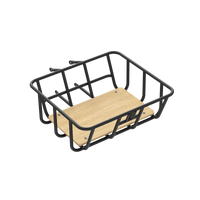

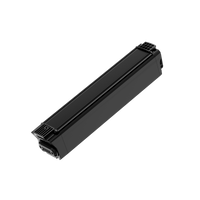


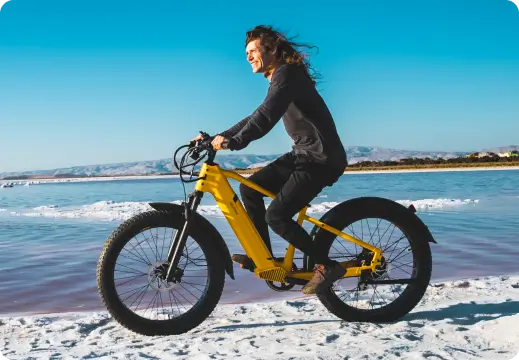






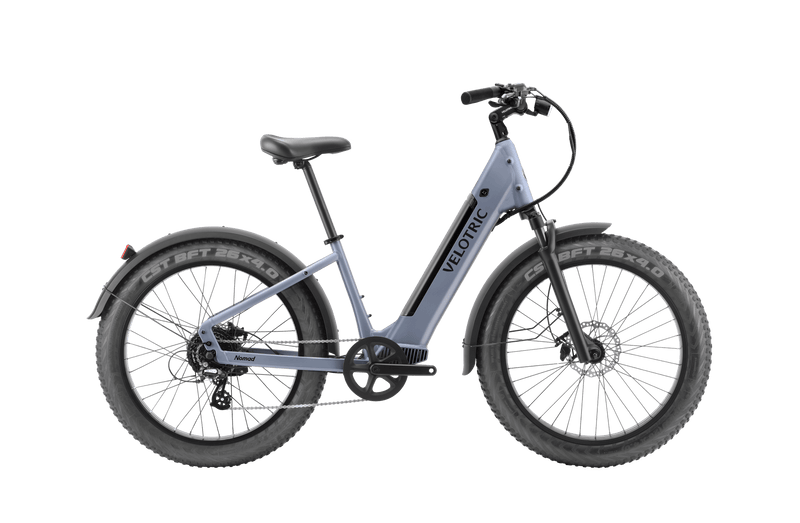



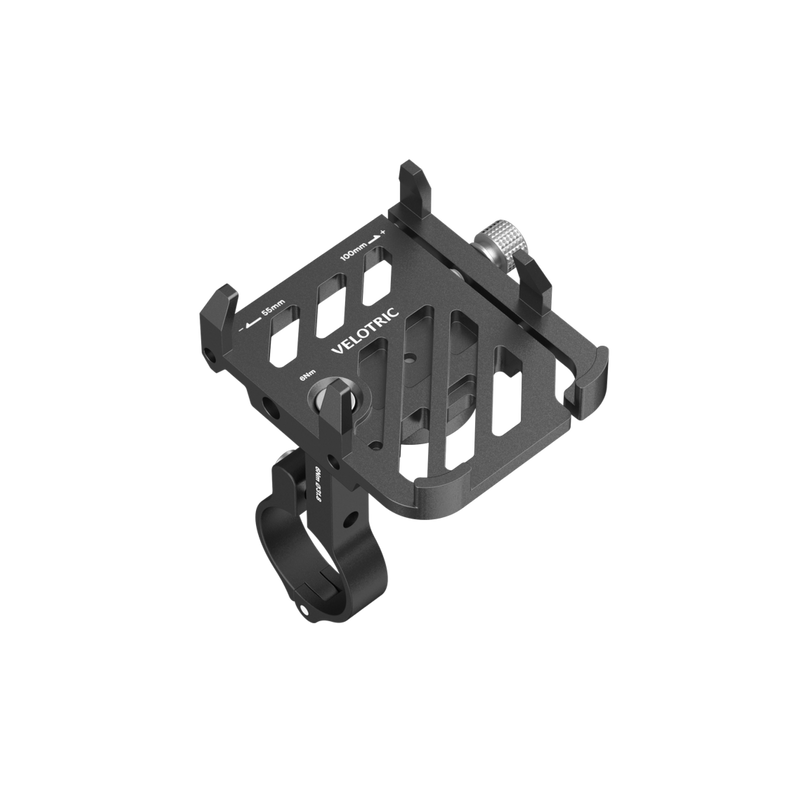
2 comments
Best info article written about “ what does all this mean” on Ebikes. Thanks for sharing.
What a great article. I recently purchased the Discovery model and love it. I have an Aventon e-bike back in Vermont and this e-bike is more fun to ride. Love the fact the tires are a bit wide for greater stability when riding which I need at 81 years young. Thanks so much for the informative article and a great product.